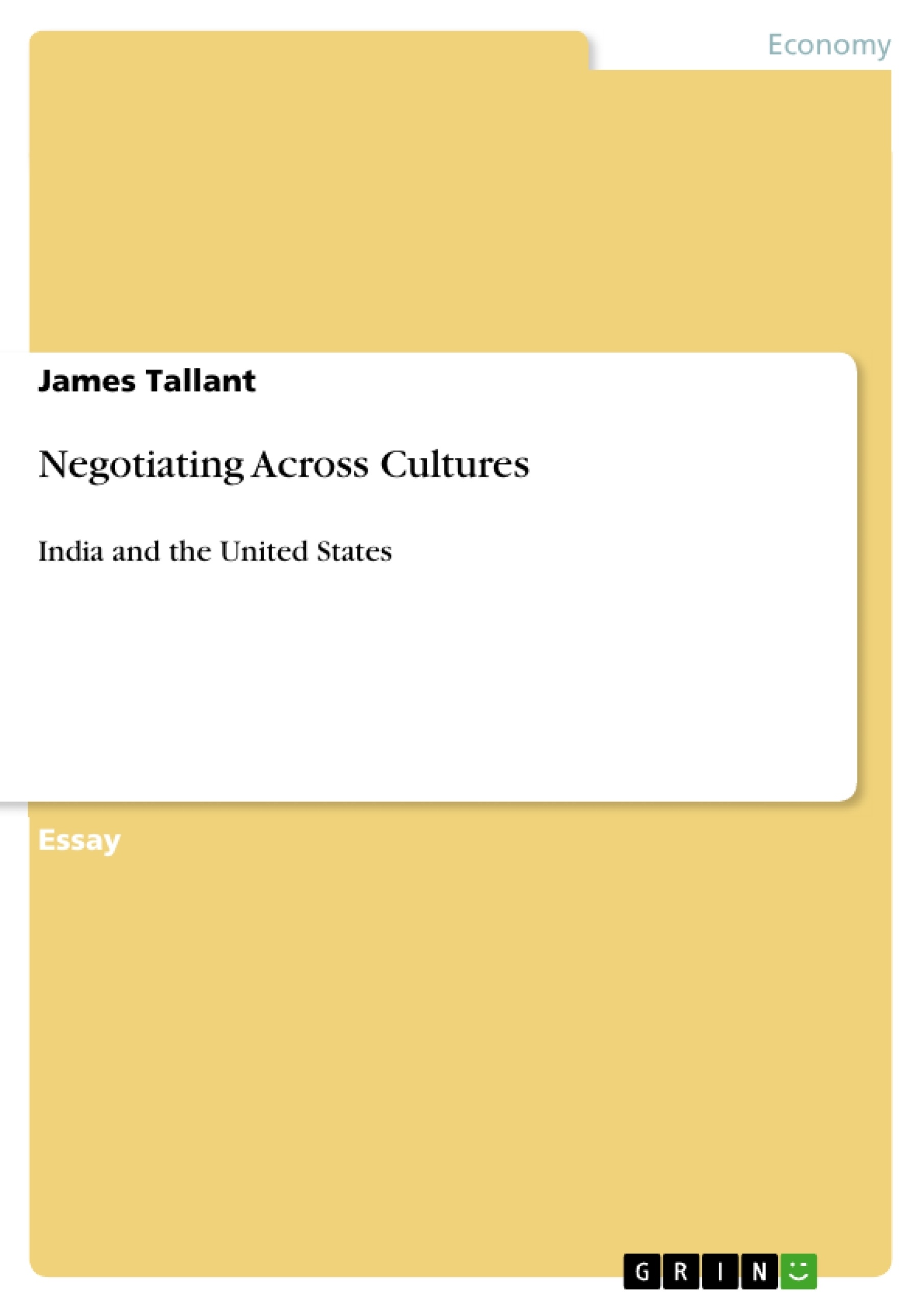Negotiating Across Culture Paper- India and the United States
Negotiating is a difficult task in supply chain management. Many variables must be considered when negotiating especially on a global scale. Understanding important factors assist in developing and following negotiation strategies across cultures and ethnic differences. Effective use of various techniques and concepts increases the probability of an organization reach a successful conclusion to global negotiations. Failure to adhere to these certain procedures can result in failed negotiations. This paper will review how an organization headquartered in the United States will negotiate with a potential supplier in India on a major purchase of key components used in manufacturing the United Sates organization’s product. In evaluating this negotiation process several concepts will be addressed: the cultural and ethnic makeup of each country will be introduced, cultural and ethnic differences between the two countries, determination of the correct negotiation tactic, and how the negotiation will be conducted to reach the desired objective.
Inhaltsverzeichnis (Table of Contents)
- United States Cultural and Ethnic Composition
- India Cultural and Ethnic Composition
- Cultural and Ethnic Differences
- Appropriate Negotiation Tactic
Zielsetzung und Themenschwerpunkte (Objectives and Key Themes)
This paper examines the cultural differences between the United States and India in the context of global business negotiations. It focuses on how an American company can successfully negotiate a major purchase of components from an Indian supplier.
- Cultural dimensions of the United States and India, using Hofstede's 5D model
- Ethnic composition of both countries
- Key cultural differences between the United States and India
- Appropriate negotiation tactics for collaborating with Indian businesses
- Building relationships and establishing rapport with Indian counterparts
Zusammenfassung der Kapitel (Chapter Summaries)
- United States Cultural and Ethnic Composition: This section introduces the cultural dimensions of the United States, using Hofstede's 5D model to assess power distance, individualism, masculinity, uncertainty avoidance, and long-term orientation. It also highlights the diverse ethnic composition of the United States.
- India Cultural and Ethnic Composition: This section provides a similar analysis of India's cultural dimensions, highlighting its collectivistic nature and emphasis on tradition. The ethnic composition of India is also outlined.
- Cultural and Ethnic Differences: This section compares the cultural dimensions of the United States and India, emphasizing the significant differences in power distance, individualism, and long-term orientation. The section underscores the importance of understanding these differences in the context of business negotiations.
- Appropriate Negotiation Tactic: This section suggests an appropriate negotiation tactic for American companies working with Indian suppliers. It stresses the importance of building relationships and establishing rapport with Indian counterparts, considering their collectivistic culture and emphasis on tradition.
Schlüsselwörter (Keywords)
This paper focuses on the cultural dimensions and ethnic compositions of the United States and India. It highlights key cultural differences that are relevant to successful negotiation, emphasizing the importance of building relationships and establishing rapport in the Indian context.
- Citation du texte
- James Tallant (Auteur), 2010, Negotiating Across Cultures, Munich, GRIN Verlag, https://www.grin.com/document/167348



